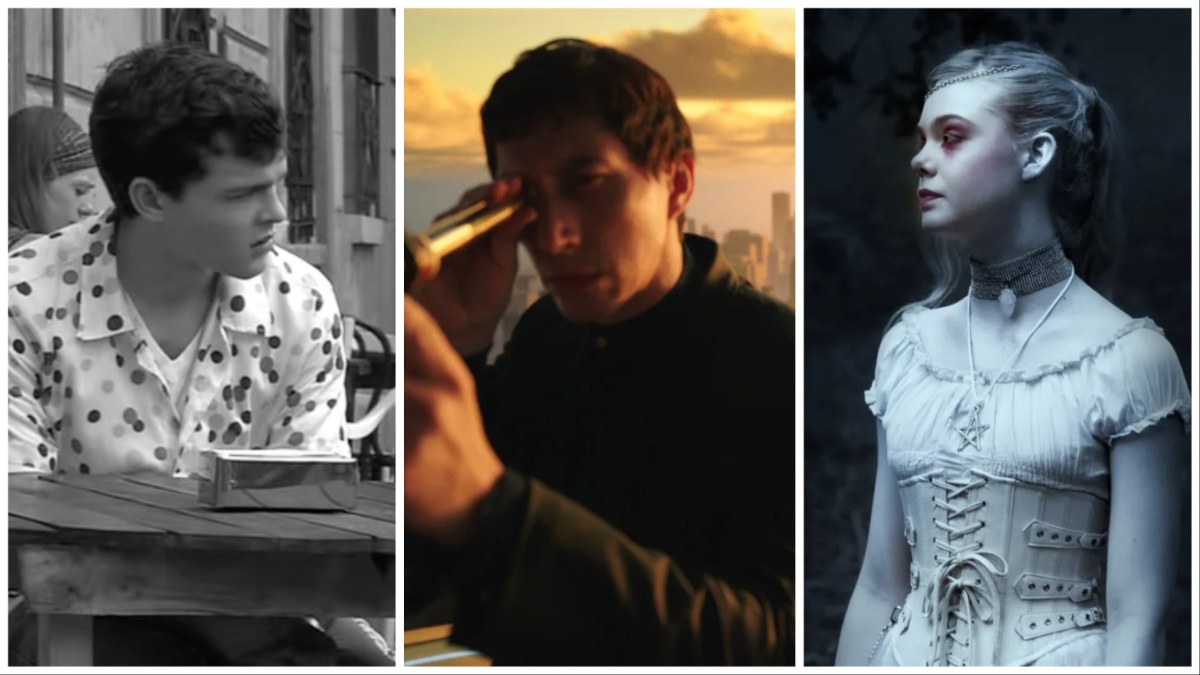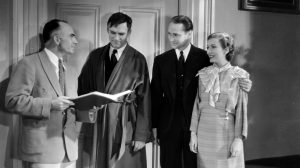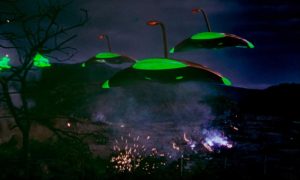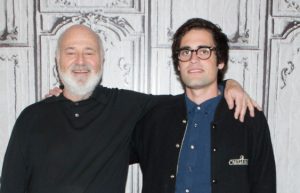
When most cinephiles think of Francis Ford Coppola, they think of his miracle run in the 1970s. During that decade, he directed four films, all of them five-star masterpieces: The Godfather, The Conversation, The Godfather, Part II, and Apocalypse Now. Or they think of embarrassments from his for-hire period, including the Robin Williams weepy Jack. Yet those five films hardly encapsulate the entire career of Francis Ford Coppola, which will likely end with the upcoming Megalopolis. Instead the best indication of Coppola as an artist and filmmaker might be found in the most recent movies he’s made, with Coppola having released three self-produced and self-financed pictures every two years between 2007 and 2011: Youth Without Youth, Twixt, and Tetro.
Although they vary in quality, and none top his work from the ’70s, this independent trio captures the experimental and romantic heart that lies at the center of Coppola’s overall oeuvre. They might also make for good preparation ahead of this year’s highly anticipated (and speculated upon) Megalopolis.
The Winding Road to Independence
Francis Ford Coppola made The Godfather because he didn’t want to work for a studio. It was an odd play, given that The Godfather and its sequel came from Paramount Pictures, who saw the Mario Puzo adaptation as an opportunity to make an old school gangster flick. It wasn’t just the stink of Italian-American stereotypes that put Coppola off the picture though. It was his distrust of studios, an attitude he came by honestly after making for Warner Bros. a movie called Finian’s Rainbow, a bloated Hollywood musical about leprechauns and American racism. But Coppola’s independent studio American Zoetrope needed money to stay alive at the dawn of the 1970s, especially after his partner George Lucas experienced a flop with the heady sci-fi art film, THX 1183. So, at Lucas’s urging, Coppola took the gig.
And it worked. Not only was Coppola able to fight to make The Godfather and The Godfather, Part II into nuanced projects about Italian-American culture and the evils of capitalism, but he gathered enough credibility and money to make a smaller project like The Conversation and bring the earnings back to American Zoetrope, even after the disastrous filming of Apocalypse Now. Coppola then sought to launch this new era independent filmmaking with 1982’s One From the Heart, a surrealistic romantic movie that he made, in part, to show off the capabilities of American Zoetrope, with its sound stages and amenities. Unfortunately, One From the Heart bombed, crashing Zoetrope and forcing Coppola to return to the studio system as a hired gun.
That period produced stinkers (Jack) as well as some good movies, such as the defiant Tucker: A Man and His Dream and the lush Bram Stoker’s Dracula. But none of those were the types of movies that Coppola really wanted to make. So after the solid John Grisham thriller The Rainmaker in 1997, he backed away from directing. He spent part of his time thereafter returning to his previous work, offering new cuts of The Outsiders and Apocalypse Now. He also took a “can’t beat ’em, join ’em” approach by assuming a position on the board at the studio MGM. He did so in part to revitalize his Zoetrope facilities but that had less than stellar results. Coppola’s technical meddling with the 2000 Walter Hill-directed sci-fi movie, Supernova, resulted in a substandard cut, a box office flop, and more than a few bad feelings.
So when Coppola returned to direction with a trio of self-produced, self-finances, and deeply personal movies, it seemed like the culmination of the legendary filmmaker’s life work.
Three From the Heart
From the outset, Youth Without Youth, Tetro, and Twixt seem to have little in common.
Based on the Romanian novel by Mircea Eliade, Youth Without Youth (2007) begins in 1938 and stars Tim Roth as 70-year-old linguistics professor Dominic Matei. Matei has devoted his life to finding the origins of human language. Filled with regret for past failures and losing his great love, Matei goes to Budapest planning to commit suicide when he’s struck by lightning, which somehow restores his youth. As a much younger man, Matei continues his research and even encounters a woman called Veronica (Alexandra Maria Lara) who may be the reincarnation of his lost love. He also experiences surrealistic visions that blend reality with fantasy, including that of his own glowering doppelgänger.
Tetro (2009) is a raw, black and white character study, in which Alden Ehrenreich and Vincent Gallo play estranged half-brothers, both sons of the lauded but cruel composer Carlo Tetrocini. The much younger Bennie (Ehrenreich) has been trying to escape his father’s shadow by serving as a lowly waiter on a cruise ship while the older Angelo (Gallo) is a writer who lives with his girlfriend Miranda (Maribel Verdú of Y tu mamá también and The Flash) in Buenos Aires. When Bennie’s ship docks in Buenos Aires, he looks up Angelo, who insists that everyone call him Tetro and has adopted his father’s brutish tendencies.
The last of the bunch is Twixt (2011), a far more playful film, this Gothic ghost story is about a struggling hack novelist, the ghost of Edgar Allan Poe, and a murderer. The silliness begins with the name of the author played by Val Kilmer: Hall Baltimore. A horror writer long past his prime, Baltimore hopes to rekindle his creativity by following in the footsteps of his hero, Baltimore resident Edgar Allan Poe. He goes to a small town and rents a room in a hotel where Poe once stayed and begins working on his book. But several interruptions get in the way, including video calls with his estranged wife Denise (Joanne Whalley), an overeager fan in elderly sheriff Bobby LaGrange (Bruce Dern), and ghostly visions of a dead girl called V (Elle Fanning). Against his will, these elements draw Hall into a murder mystery with a connection to his book.
As different as the trio seems, they encapsulate everything great and frustrating about Coppola. They are ambitious, uneven, and always personal.
Late Last Looks
Throughout his filmography, Coppola proves himself as a master visual storyteller. The face of the undertaker (Salvatore Corsitto) barely protruding from the shadows as he begs Don Corleone for justice in The Godfather. Willard’s (Martin Sheen) head breaking the smoke and water before completing his bloody mission in Apocalypse Now. Lucy’s (Sadie Frost) red dress billowing from her body when the vampire (Gary Oldman) beckons her toward her doom in Bram Stoker’s Dracula. Even a failure like One From the Heart is worth watching if only for its wonderful compositions.
Given those hallmarks, his three most recently released films do deserve some disappointment. Youth Without Youth has moments of striking beauty. Some of the pastiches to classic cinema play well, such as when newspapers blast into frame to declare a change in era. And the occasional individual images draw attention, as in an over-the-shoulder shot of Veronica gazing into a handheld looking glass, her concerned expression glaring back at the viewer.
But none of these images come together into a thematic whole, especially not the reoccurring image of a rose bathed in shadow. The image hopes to say something about rebirth and beauty, but roses are such a banal metaphor that it comes to stand for nothing, just another empty pretty thing instead of a compelling idea, much like the movie itself. In Youth Without Youth, Coppola finds no interesting way of portraying the novel’s themes.
The final film in the trilogy, Twixt, seems to go in the exact opposite direction though. Coppola employs aggressive digital photography to give real-world scenes, especially those in which Baltimore argues with Denise in his hotel room, a flat, amateurish quality, while heightening the fantasy scenes. When the ghostly V leads Baltimore through the land of the dead, she is presented in stark black and white, with highlights on her lips and cheeks. She seems to glow, especially when standing next to the dull Baltimore.
While not as effective as, say, the late work of David Lynch, which manages to make its flat lighting and obvious compositions part of the dream logic, the striking blue backgrounds and stark white face on Fanning helps sell the otherworldly feeling.
It might be tempting to read Tetro‘s visual style as a retreat from experimentation. The movie is black and white, training most of its attention on the performer’s faces and real spaces, especially Angelo apartment. When Angelo and Bennie attend a staging of Faust, one would expect Coppola to indulge himself. But even then, he makes the costumes and stage look shabby, saving the most dramatic shots for those of Angelo, who is doing the lighting for the play, arguing with other actors.
Although not as obvious as the imagery in Youth Without Youth or Twixt, Coppola keeps the viewer’s attention on the important parts of the story. The severe lighting make Gallo’s cheekbones even sharper, soften the already round features of Erenriech’s face, and deepen the lines on the forehead Verdú’s long-suffering Miranda. Those expressions, even more than the lies that the characters tell one another, contain the story in Tetro, made clear through Coppola’s cinematography and lighting.
The Anxiety of Artistic Influence
Without question, these three late-period films vary wildly in quality. Youth Without Youth is ponderous and dull, a plodding exercise in empty self-indulgence. Twixt benefits from sprightly performances courtesy of Fanning and Dern, and a fun plot, but it must be damned by faint praise. Twixt would be a very promising debut feature, a movie that would impress if stumbled up on Mubi or Shudder. Tetro is a surprising masterpiece, thanks in part to the performance by Gallo, an actor and filmmaker known for his terrible real-life behavior.
Gallo does nothing to endear himself to the audience here, embracing the part of a man with more anger than talent, and who lashes out at everyone, especially those foolish enough to love him. And yet, Gallo has a magnetism that makes him infinitely watchable, even as we hate him. It’s one of the most effective combinations of performer and character. It makes Tetro a thrilling watch.
However, all three movies share a deep interest in the nature of art and legacy. In addition to being a dense novel that Coppola, a man always deeply concerned with the relationship between literature and cinema, struggles to adapt, Youth Without Youth is literally a story about legacy and regret. When he becomes a young man again, Matei has the opportunity to not only continue his work, but also see how it effects the rest of the world, both as it facilitates and/or resists the rise of fascism in Europe and in his relationship with Veronica.
Hall Baltimore of Twixt is a failure, a man whose hack novels don’t even sell anymore, driving him to desperate ends in search of inspiration. But when he finally, literally channels his hero Poe, Baltimore must turn away from tawdry things like art and seek justice instead, solving the mystery of the murdered children.
Of the three, Tetro most obviously deals with artistic influence. Angelo and Bennie literally are the sons of a great artist, whose work inspired the world but left them with emotional scars. When Angelo abuses Miranda or berates his fellow creatives, he embodies the other legacy of his esteemed father. And while some might argue that the lives changed by his father’s music outweighs the harm done to a handful of people who know Angelo, the film clearly disagrees. It shows us how Angelo follows his father to hurt other people.
And yet, Tetro is resolutely optimistic. Throughout the movie, Bennie transcribes a play that Angelo wrote, getting insight into his brother’s pain and working toward reconciliation. Crucially, although it’s fraternal love that drives Bennie to seek out Angelo, the method of connection is art. Through the play and other works, Bennie understands his brother, and his father, and learns how to sympathize.
Whatever their quality, this late trilogy finds Coppola looking back at his career, both worried and optimistic. But of course they don’t represent the end of his career. That honor belongs to Megalopolis.
Slouching Toward Megalopolis
Outside of the few luminaries who have seen a completed cut, Megalopolis exists currently only as a short teaser trailer in the popular consciousness. It consists of nothing but Adam Driver‘s architect Cesar Catilina walking to the precipice of a tall building and looks down on the city he helped create. No sooner does Cesar allow himself to drop over the side than he screams “time, stop!” freezing time and holding himself in place. Standing back up, Cesar snaps his fingers and everything moves again.
With its heavy use of digital effects and surreal content, the Megalopolis trailer bears the hallmarks of Coppola’s later work. The sick yellow glow of the scene, the unconvincing compositing of Driver and the background, the uncomfortable shift extreme close-up to wide shot—none of these suggest the work of a master on his final project. But as we saw with Twixt, Coppola doesn’t always need or want realistic visuals. Instead the “ugliness” of the imagery may be part of his larger themes.
At this point, the most we know about Megalopolis comes the short trailer and a statement Coppola sent to Vanity Fair. Coppola explains that the film adapts a Roman event known as the “Catilinarian Conspiracy,” in which a powerful Roman tried to overthrow the consul in 63 BC. The movie imagines similar events in a future New York City where Driver’s Cesar considers his responsibilities to a corrupt mayor (Giancarlo Esposito).
In his statement, Coppola explained why he decided to officially title the film Francis Ford Coppola’s Megalopolis, a first in his career. “Always respecting the original writer in films I made, and always insisting that their names appear above the title, such as it was with Mario Puzo’s The Godfather, or Bram Stoker’s Dracula,” he wrote, “it was only with The Rain People and The Conversation that it could have been permitted to have my own name as original writer on it; but then I was too insecure to present myself in such grandiosity.”
But from the first days of writing the script, he kept everything under his name. “Early on, I remember once I took 130 blank pages and put on a title page boldly announcing Francis Ford Coppola’s Megalopolis, and under that, All Roads Lead to Rome.” Grand as it sounds, Coppola’s description only sets up the anxiety and disappointment that soon followed. “I pretended it wasn’t totally blank, weighing it in my hands so I could imagine what one day it would feel like, and believe one day it could exist. Then later, once I had a draft, I must have rewritten it 300 times, hoping each rewrite would improve it, if only a half percent better.”
Furthermore, while he takes full credit for Megalopolis, Coppola is also quick to cite his inspirations, including the 1932 sci-fi movie The Things To Come, based on an H.G. Wells novel. “This 1930s [Alexander] Korda classic is about building the world of tomorrow, and has always been with me,” Coppola said; “first as the ‘boy scientist’ I was and later as a filmmaker.” In other words, Megalopolis promises to be a movie about an architect wrestling with the results of his work and how to move forward, a mission aided(?) by the fantastic ability to stop time from flowing forward. Also, it is inspired by a movie with which Coppola has identified all of his life, especially as he went on to make movies.
We don’t yet know if Megalopolis will be a good movie, if it will stand alongside The Godfather and Apocalypse Now as classics, or fall alongside the recent trio as something personal but overlooked. If Megalopolis does fit in with Youth Without Youth, Tetro, and Twixt, then Coppola’s final movie will have fitting company. After all, those three movies wrestle with issues of influence and legacy, they represent the best and worst of a filmmaker who always wanted to do things his way, driven by the steadfast belief that cinema is an art form, not a product.
The post Megapolis Continues Francis Ford Coppola’s Wild Late Career Big Swings appeared first on Den of Geek.










